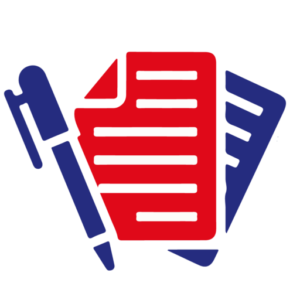getanswer
Change VisionundefinedIn this discussion, we focus on the vision for your own change initiative. Use the questions below to develop and refine your vision statement:undefinedWhat is your vision statement for the change initiative you have chosen for your Assignment 2 projects? undefined undefinedA unified E2E tool that will provide system accuracy and a single source of truth through its ability to provide clarity, ease of use, and confidence. This will allow us the opportunity to maximize offerings to our customers and focus on future platform alignments.undefined undefinedWhy did you choose this vision? undefined undefinedBased on the focus for the working team there needed to be a deliberate tie to the WIIFM for the team members, how this will assist us for the now and ultimately a focus on iteration to continue to transform the business (Kotter 1996).undefinedAdditionally, as you look at how organizations can succeed in their industry, they will need to ensure they are focusing on what their market customer technology needs will be post pandemic (NCBI 2020).undefined undefinedUse the EVM tool presented in this week’s lecture to help you further refine your vision statement. Strategic- Alignment of a full-scale E2E initiative that will address organizational pain points and begin alignment towards North Star Architecture Operational- The ability to create cross-functional success metrics that will also, align to secondary team and initiative objectives Financial- Leverage insights to create pre/post mortems of how initiatives are sized and created. This will allow the teams to analyze life cycles, fall out, and overall cost impact. Organizational-Cross channel process improvement initiatives that are aligned by focusing on current initiatives and identifying gaps that will transform how we do business (JWI 555, WK4). How much alignment to this vision do you feel is already in place, even if it is not well articulated yet? undefined undefinedThe alignment across our workstream is solid. We have identified and shared all compiled elements of the E2E process and the impact on the external and internal customer. The reason for alignment success is to complete many alignment sessions across all impacted teams to understand their key pain points and ideas for enhancements.undefinedThe next step is validation for all via a visual map that articulates what all of the teams provided as their current processes and the overlay of pain points. Then the team worked through a high-level future state solution which encompassed Quick wins, greater partnerships across the business with understanding Work in Flight, leveraging new synergies across channels to connect to one unified workflow management system as well as enlisting more adopters to the overall focus (Welch 2005).undefinedGoing through this evolution with all of the impacted teams allowed for a sense of trust and ownership with all of us to get to what a new future state could be. We now have to pivot on accountability as we navigate through the work in flight and gaps (Lencioni 2002).undefined undefined undefinedWhat steps are needed to communicate the vision and align stakeholders around the change initiative? undefined undefinedThe steps that are needed will be really aligning with the leadership stakeholders and business sponsors on what the strategy is, how we will measure success, how we will mitigate risk and how they can help drive work forward.undefinedWe will also have a cadence with a working team to work through current initiatives for prioritization and create what is needed for identified gaps.undefinedThere will need to be a strong network established with leadership as well as the key members of the working team. A balance of success stories and rewards need to be provided to ensure your adopters stay engaged and keep assisting you with driving awareness and key measures.undefinedLastly, continue to align on organizational synergies to understand any work that can be integrated into a plan that could provide greater efficiency to high impact initiatives (JWI 555, WK4).undefinedReferences:undefinedundefinedJWI 555, Week 4, What’s Your Vision? undefinedKotter, J.P. (1996), Leading Change. Boston, MA: Harvard Business Review Press.undefinedLencioni, P. (2002). The Five Dysfunctions of a Team. San Francisco, CA: Josey-Bass.undefinedNCBI (December 9, 2020). Information technology solutions, challenges, and suggestions for tackling the COVID-19 pandemic. Retrieved from: https://www.ncbi.nlm.nih.gov/pmc/articles/PMC77242…undefinedWelch, J. (2005). Winning. New York, NY: Harpers Collins.

